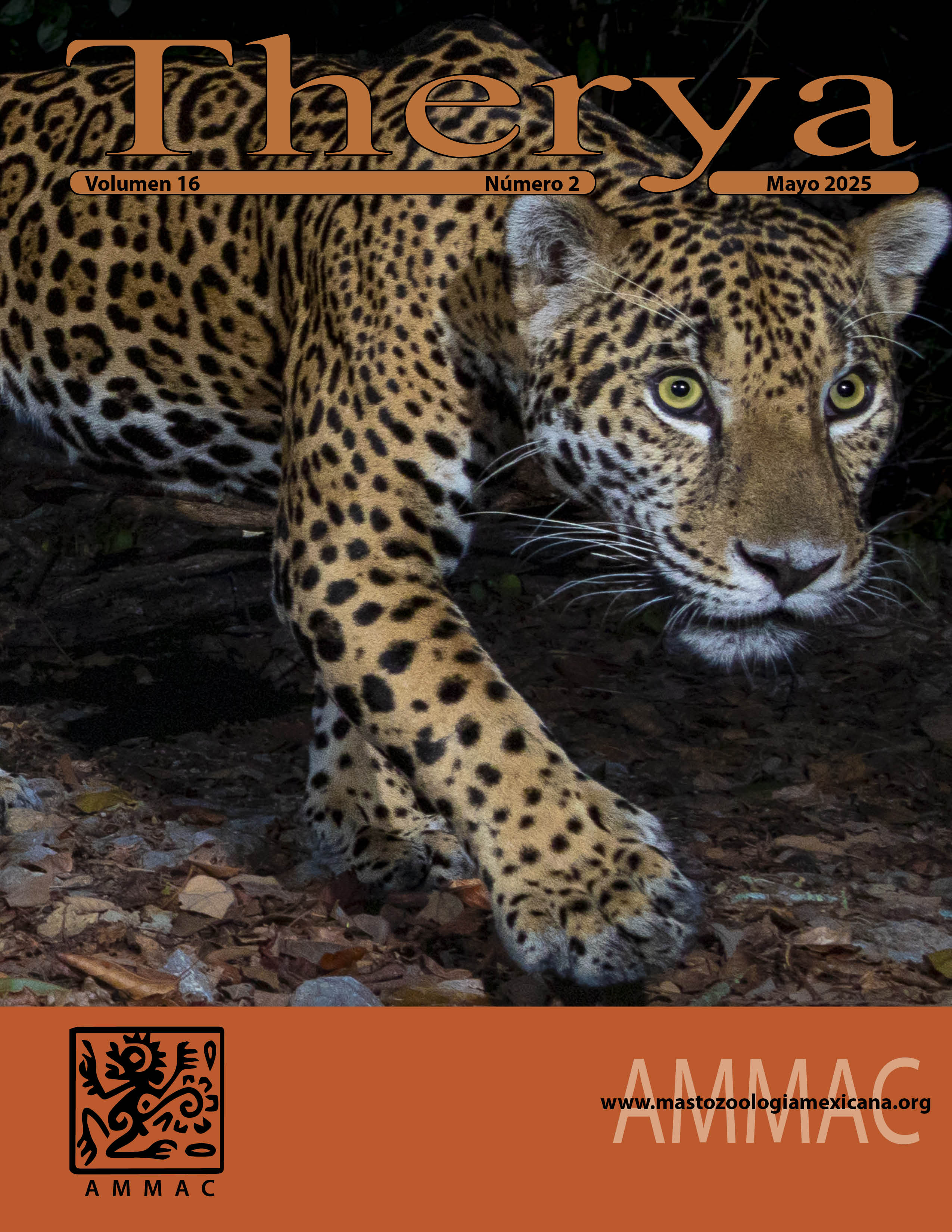Biogeographic pattern and potential distribution of Glossophaga valens Miller, 1913 (Chiroptera: Phyllostomidae)
Keywords:
Arid Environments, dry ecosystems, dry forest, Huancabamba, Marañón, species distribution modelling, zoogeographyAbstract
Glossophaga valens is a generalist nectar-feeding bat known from the western slopes of Ecuador and Peru. Recently elevated to species level, key information about its geographic boundaries and environmental preferences remains limited. We developed a niche-based species distribution model to describe its biogeographic pattern, delimit its distribution, and evaluate its potential range. We compiled 107 occurrence records from scientific literature and museum collections, covering the complete known distribution of the species. After curating these data, 83 high-quality and spatially independent records were combined with five bioclimatic variables to build a model using the Maxent algorithm in the Wallace software. The best-performing model was selected from 50 candidates based on lower complexity criteria. Our results indicate that G. valens exhibits a nearly continuous distribution with high to very high suitability along the Pacific coast of Ecuador and Peru, while isolated conditions occur in northeastern Peru. Our findings update the marginal localities for the species and highlight its strong preference for arid to semi-arid conditions in western lowlands below 1500 m. The model refines the species’ range, placing its northernmost boundary in Esmeraldas, Ecuador, and suggesting its absence from Colombia. It also suggests that its southern limit could extend from southern Arequipa to northern Chile, pending future surveys and specimen revisions. Additionally, we report new easternmost records in northeastern Peru, aligning with the Marañón Valley. Key geographic features such as Seasonally Dry Tropical Forests, the Andes, and the Huancabamba Depression, alongside ecological traits like generalist feeding habits and adaptability, play a crucial role in shaping its distribution. Finally, we discussed how these geographic features have influenced the distribution of G. valens and other western Andean bats, and remark conservation implications in their threatened habitats.
Downloads
Downloads
Additional Files
Published
How to Cite
Issue
Section
License
THERYA is based on its open access policy allowing free download of the complete contents of the magazine in digital format. It also authorizes the author to place the article in the format published by the magazine on your personal website, or in an open access repository, distribute copies of the article published in electronic or printed format that the author deems appropriate, and reuse part or whole article in own articles or future books, giving the corresponding credits.










